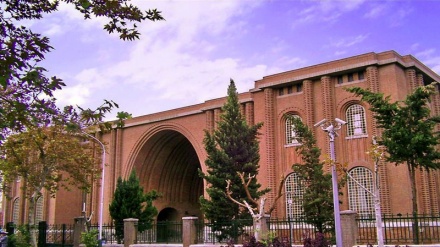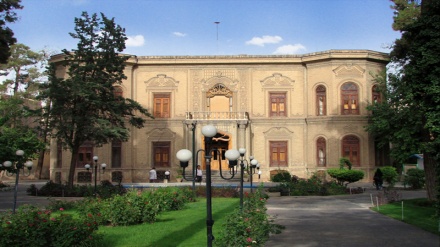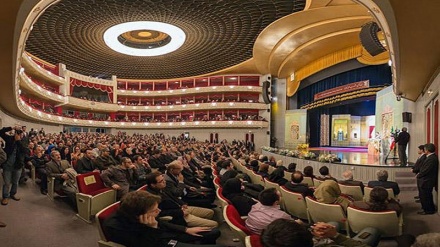Iran your attractive destination (214)
Welcome to the 214th weekly episode of the series Iran Your Attractive Destination. In this part we will become familiar with Tehran’s Darabad Museum.
Iran, due to its vast area and especial climatic conditions, is one of the valuable natural habitats which are home to a diverse range of plant and animal species. These climatic conditions have given rise to existence of nearly 8000 plant species, and 1141 animal species in this country, including over 517 bird species, 234 reptile species, 174 fish species, 194 mammal species, and 22 amphibian species, in addition to a significant number of invertebrates. A few of these plant and animal species are on the verge of extinction. Today, we will introduce Iran Wildlife Museum.
This museum is situated on the foothills of Alborz Mountain Range on the rear end of northeastern Tehran, in a district named Darabad. This museum is one of the rare and unique museums in the region. The museum was inaugurated in the year 1993 AD by Tehran’s Municipality to make people familiar with Iran’s cultural and natural heritage and to instill the importance of the protection of environment and wildlife.
This museum is a beautiful two-story building, with a foundation of 2500 square meters, covering an area of 12,000 square meters. The museum joined the International Council of Museums in the year 1997 AD, in addition to launching a website.
This museum consists of a number of sections. In some halls, taxidermied animals are on collective and individual displays. In the other halls, a collection of live creatures are kept. Within the five sections of the museum which belongs to living creatures; different mammal, bird, aquatic, reptile, and insect species are kept. On the first floor of this museum, which consists of several halls, pretty birds capture the attention of viewers.
Throughout the interconnected halls of the museum which are considered for display of animals, viewers are witness to depiction of a variety of animal species. On one side, a panther has attacked a group of deer, while on the other side; flamingoes have opened their wings to fly. At a corner, a wolf is lurking to attack an animal, while on the other side a huge bear is standing tall. In the first hall, which covers a number of species from Asia, Europe, and North America; next to a python, the Indian and Sri Lankan peacocks and a Bengal tiger are on display.
The mammals on display in the Europe and North American section include a moose, European rain deer, North American grizzly bear, and Siberian tiger. Also a number of bird species in Asia and Europe are on public display.
The Hall No. 2 belongs to northern Iran species. Animal species such as Armenian rams, deer, and flamingoes of northwestern Iran are on display.
Moreover; boars, felines such as leopards and cats, and canines such as jackals, foxes, and wolves have been shown in this section. Furthermore, the taxidermied birds on display in Hall No.2 are indigenous and migrant species of Iran.
At the Hall No.3, we observe two rare and beautiful mammal species, namely Iranian zebras and panthers, which are on the verge of extinction. Also a type of vulture is shown in this hall. Mammals such as jackals and foxes, and reptiles such as snakes and lizards are on display in this hall.
In the 4th hall, a number of African mammals, and migrant birds of this continent and Iran are on display. Next to the entry of this hall, horns and skull of African bulls, the ivory of African elephants, rhinos, wild dogs, leopards, and African boars have been depicted.
On the right hand corner of this hall, a diverse range of bovines, such as African antelopes are on display.
There are a number of aquariums in the reptile and fish species section. In the aquatics section, a variety of fresh water fish species, from Asia, Africa, and South America are kept. The diverse color of these creatures, coupled with their delicate moves in water meet the eyes. Some of the fish species in this section are rare and highly treasured worldwide.
In the reptiles section, different types of poisonous and semi-poisonous snakes are on display.
In the Hall No.7, different geological phases have been shown. There are also a number of fossils on display in this section, some of which belong to more than a billion years ago.
In this hall, also a number of minerals and stones which maintain pharmaceutical and industrial importance are shown.
The insects’ section is situated north of the museum’s courtyard, and aims to introduce a variety of butterflies, which are among the most beautiful insects. Also, scorpions and tarantulas are on public display in this section.
Meanwhile, the tanning and taxidermy workshop is one of the interesting sections of this museum. The taxidermy workshop has been shaped to provide easy access of viewers to information about the phases of taxidermy. Meanwhile, more than half of the taxidermied animals have been donated to the museum by hunters and eco-tourists, and are kept under their names.
The library of this museum keeps more than 15,000 volumes of books in a number of domains such as environment; and is among the most credible museums in Tehran in the fields of botany, zoology, and geology.
Moreover, the traditional tea house of this museum grants peace of mind and comfort to customers, in the mild climate of northern Tehran.
MR/SS


